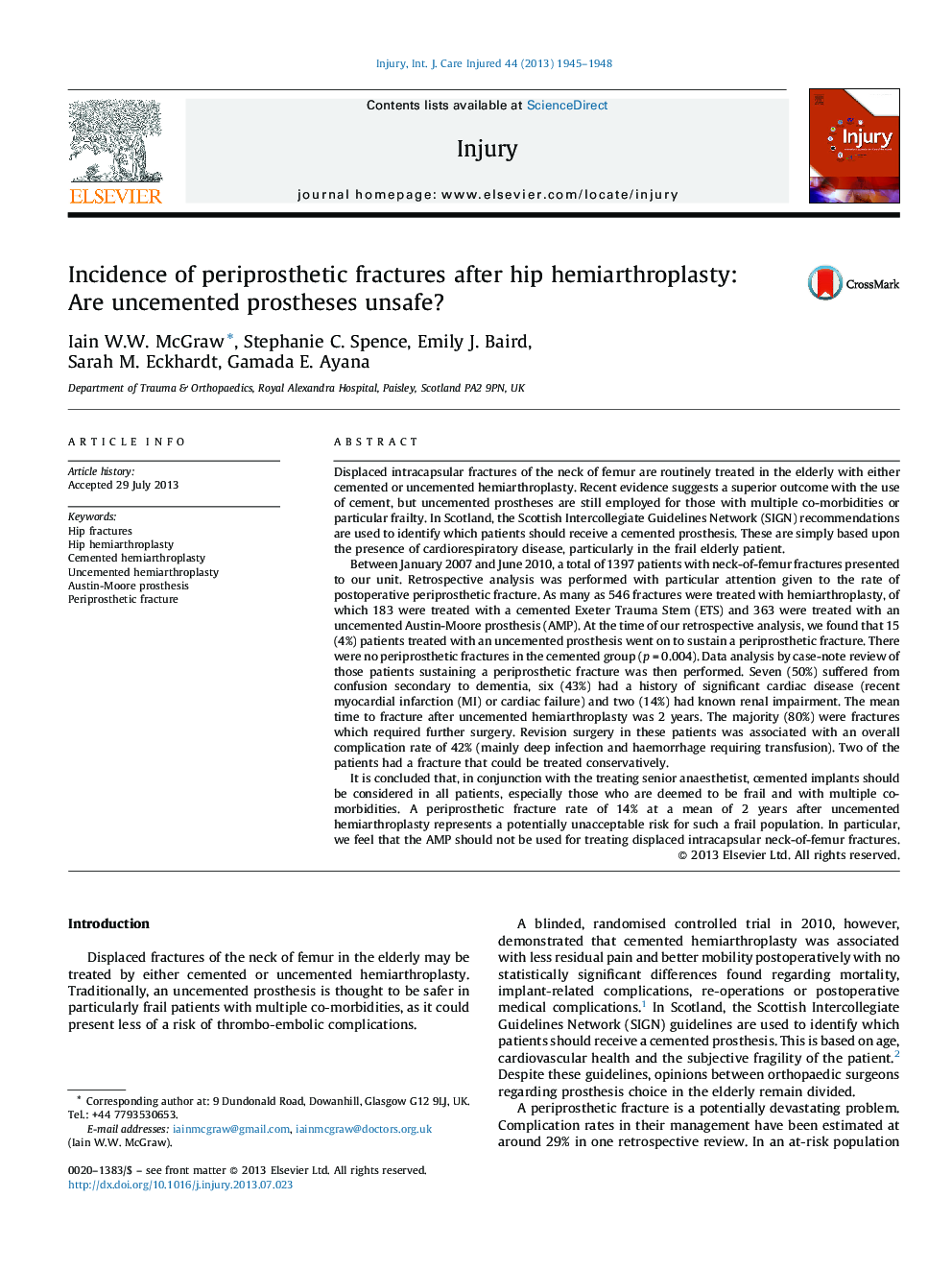| کد مقاله | کد نشریه | سال انتشار | مقاله انگلیسی | نسخه تمام متن |
|---|---|---|---|---|
| 3240086 | 1206030 | 2013 | 4 صفحه PDF | دانلود رایگان |

Displaced intracapsular fractures of the neck of femur are routinely treated in the elderly with either cemented or uncemented hemiarthroplasty. Recent evidence suggests a superior outcome with the use of cement, but uncemented prostheses are still employed for those with multiple co-morbidities or particular frailty. In Scotland, the Scottish Intercollegiate Guidelines Network (SIGN) recommendations are used to identify which patients should receive a cemented prosthesis. These are simply based upon the presence of cardiorespiratory disease, particularly in the frail elderly patient.Between January 2007 and June 2010, a total of 1397 patients with neck-of-femur fractures presented to our unit. Retrospective analysis was performed with particular attention given to the rate of postoperative periprosthetic fracture. As many as 546 fractures were treated with hemiarthroplasty, of which 183 were treated with a cemented Exeter Trauma Stem (ETS) and 363 were treated with an uncemented Austin-Moore prosthesis (AMP). At the time of our retrospective analysis, we found that 15 (4%) patients treated with an uncemented prosthesis went on to sustain a periprosthetic fracture. There were no periprosthetic fractures in the cemented group (p = 0.004). Data analysis by case-note review of those patients sustaining a periprosthetic fracture was then performed. Seven (50%) suffered from confusion secondary to dementia, six (43%) had a history of significant cardiac disease (recent myocardial infarction (MI) or cardiac failure) and two (14%) had known renal impairment. The mean time to fracture after uncemented hemiarthroplasty was 2 years. The majority (80%) were fractures which required further surgery. Revision surgery in these patients was associated with an overall complication rate of 42% (mainly deep infection and haemorrhage requiring transfusion). Two of the patients had a fracture that could be treated conservatively.It is concluded that, in conjunction with the treating senior anaesthetist, cemented implants should be considered in all patients, especially those who are deemed to be frail and with multiple co-morbidities. A periprosthetic fracture rate of 14% at a mean of 2 years after uncemented hemiarthroplasty represents a potentially unacceptable risk for such a frail population. In particular, we feel that the AMP should not be used for treating displaced intracapsular neck-of-femur fractures.
Journal: Injury - Volume 44, Issue 12, December 2013, Pages 1945–1948